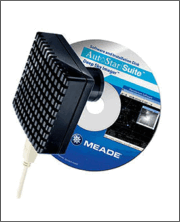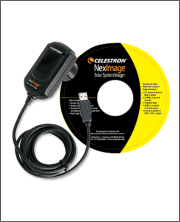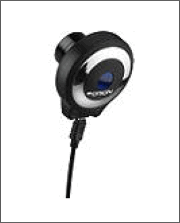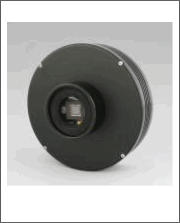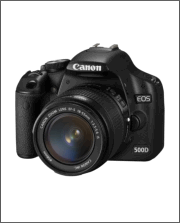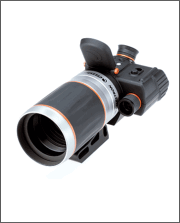|
CCD CameraWhy choose a ccd camera for astronomy? Specialized CCD cameras are widely-used by amateur astronomers because they are sensitive to light wavelengths, from ultraviolet to infrared. In fact, they are so sensitive that many additional actions must be taken to minimize the level of image-distorting "noise," such as cooling the CCD to liquid nitrogen temperatures.
With the appropriate amount of compensation and image processing, top quality astrophotography has become available to a significant number of committed amateur astronomers equipped with CCD camera equipment. These cameras are cooled to lessen noise, and are expressly designed for scientific and imaging purposes by many different manufacturers. They are designed to be used through a telescope, although adapters can be acquired that permit use with camera lenses for wide angle shots. Regardless of whether the camera is connected to a telescope or a camera lens, focusing and centering is probably the most bothersome and time consuming area of the whole imaging experience. There is no way to look through the camera and optical system, so focusing is carried out by taking one image, examining it for sharpness, fine-tuning the focus, taking a second image and repeating this procedure until eventually the sharpest image is produced. A sturdy mount is also required to deal with vibrations from the wind and various sources, and the huge weight of the majority of imaging platforms. Deep sky astrophotography in particular requires a camera that can take long exposures over many minutes with very low noise. Most dedicated astronomical ccd cameras reduce noise by cooling down the camera several degrees below the ambient temperature, one exception is the Meade DSI II CCD Astro Imager which is the world's first un-cooled camera with low thermal noise. This camera will allow you to take exposures for hours at a time. It features new thermal monitoring sensors, that automatically match dark frames to ambient temperature so it's nearly impossible to take an uncalibrated picture. The software includes a new zoom feature for easier focusing and the squared pixels of the new larger chip make processing simpler and images more stunning than ever before. Return From CCD Camera To Amateur Astrophotography |







